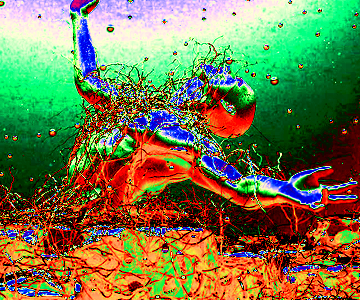Art views need digital lense
 Australian creative industries are a major economic force, but a new study to creatives to go digital or go bust.
Australian creative industries are a major economic force, but a new study to creatives to go digital or go bust.
Australia's creative economy is growing but its leaders are now digital content and software professionals, rather than those from traditional areas such as publishing, the performing arts, film and television, visual arts and music.
“Jobs in creative services [are] growing at three times the rate of the overall workforce,” says QUT Distinguished Professor Stuart Cunningham.
“The 2016 Census tells a story of continued strong growth in Australia’s creative economy.
“New analysis of the Census, and comparisons with previous Censuses going back to 1986, show that, as a share of Australian employment, the creative workforce grew from 3.7 per cent in 1986 to 5.5 per cent in 2016.
The most recent data shows almost 600,000 people work in Australia’s creative economy, a term that is wider than creatives employed in cultural production (film and broadcasting, music and performing arts, publishing and visual arts) and creative services (advertising and marketing, architecture and design, creative software and digital content).
The sector includes support professionals who work in these creative industries, as well as ‘embedded’ creatives who work outside the creative industries, across the rest of the economy.
“The creative economy is a job intensive sector,” Prof Cunningham says.
“It immerses human talent in meaningful, creative, well-remunerated activity at a scale few other sectors can offer. It is growing at a rate nearly twice that of the Australian workforce as a whole and it is highly likely to continue to grow into the future.
“The creative services part of the creative economy is a highly innovative sector, with new jobs being created to satisfy new kinds of economic activity. Software and digital content, and new forms of social media management and marketing, are growing especially robustly as destinations for creative talent,” he said.
Professor Cunningham said the idea of a professional artist needs to be updated.
“Our general image of creative workers as barely surviving is not borne out in what we can learn from the Census,” he said.
“However it is definitely still true that those in music and performing arts, and in visual arts, earn well below the Australian mean income – and their relative situation is stagnant or deteriorating.
“It is also the case that publishing (mostly newspapers and magazines) has continued its downward spiral as an employer.
“On the other hand, creative services employment was remunerated at a rate more than 30 per cent higher than the Australian mean, with software and digital content professionals earning the highest incomes of the whole sector.”








 Print
Print